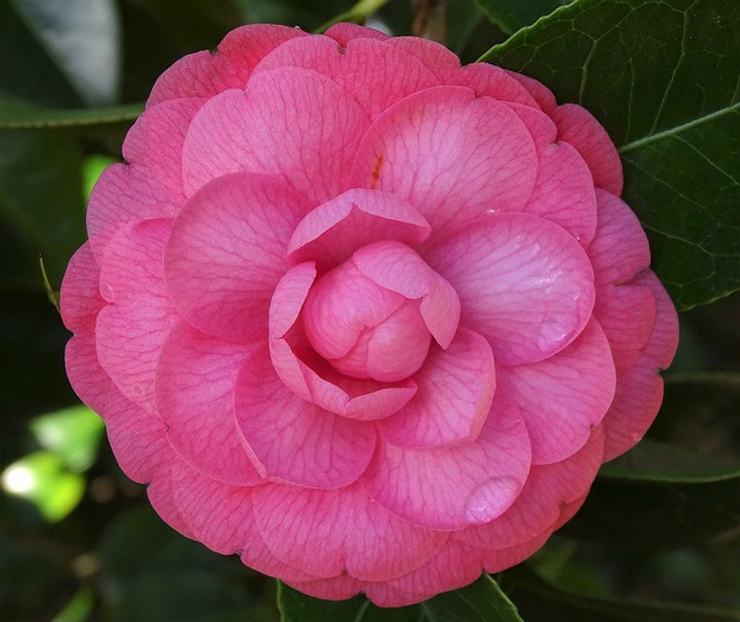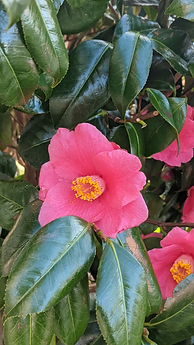
When I think of a Camellia, it makes me feel nostalgic. When I was growing up in the mid-Atlantic region of the US, my family used to travel to Miami, Florida twice a year to visit my aunt and uncle. On the way, my mom would always marvel at the beauty of the Camellia.
One year, to her surprise, my dad stopped at a nursery and bought one as we traveled through the Carolinas. He planted it next to our side door so we could enjoy its blooms in early spring whenever we passed by it to enter our house. I too have been awestruck by it’s beauty. What is a Camellia you ask? It is a flowering shrub that can live for more than a century! Read on to learn more about Camellia bushes and how to grow and care for them.
(Some of the links within this post are affiliate links on which I receive a small compensation from the sale of certain items with no added expense to you.)
(As an Amazon Associate I earn from qualifying purchases.)
What is a Camellia?
A Camellia is a flowering shrub that has been around for a 1,000 years! The oldest living Camellia was said to have been planted in 1347 in a monastery in China.
There are more than 3000 kinds of Camellia bushes. They are grown either for their ornamental beauty or for producing tea.
A Camellia is in the Theaceae family, otherwise known as tea plants. Their beautiful, dark, glossy leaves surround exquisite single or double blossoms. Their blooms come in varieties of white, pink, red or streaked. They have a compact, shapely growth pattern and, depending on the variety, can grow up to 12 feet tall.
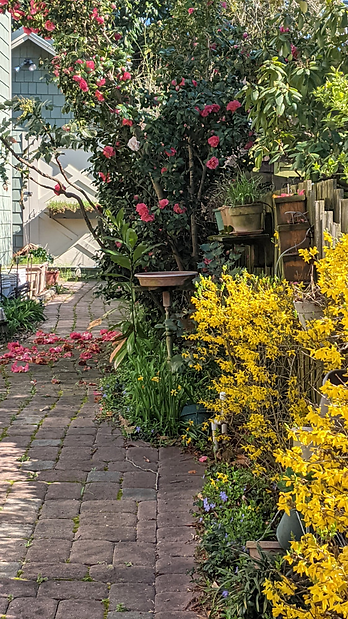
Varieties:
The two most common varieties planted for their ornamental beauty are C. japonica and C. sasanqua. Camellia sasanqua is more hardy and will do well in northern areas if it is planted on a north facing side and protected from fierce winds by a fence or building. The C. japonica will thrive better in more temperate regions. The less common Camellia sinensis variety is grown for its leaves that can be steeped for tea.
Camellias can be found growing naturally in woodland areas of eastern and southern Asia from the Himalayas to eastern Japan and Indonesia.
They are evergreens, meaning they retain their leaves in the winter. For this reason, they are welcomed by gardeners to add beauty to winter landscapes.
Choose the Correct Site
It is important to know which variety you purchased before deciding where to plant a Camellia. Consider its mature height and its variety to determine the amount of sunlight it needs.
Zone:
Camellias grow best in temperate zones from 7 – 9. However, some varieties will do well in zone 6b. Find you zone using this illustration.
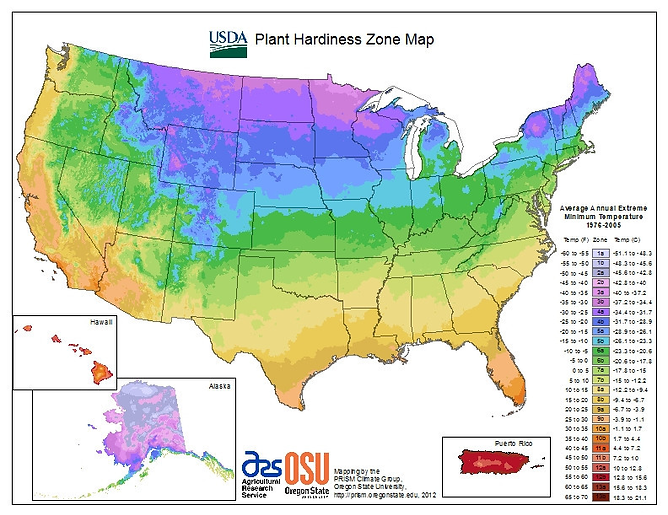
Sunlight:
A Camellia is a woodland plant and most do not do well in sunny, south facing spots. One exception is the Camellia sasanqua variety that can tolerate some sun.
Camellias prefer an area with dappled sunlight or a partly shaded area. When the bush is young, the roots need to be protected from direct sunlight. Also, once established, they should be grown in an area where they are protected from early morning sun. The morning sun will scorch the buds that have remnants of early morning dew. They also need to be planted away from hot, direct, summer afternoon sun.
Camellias do well under a canopy of trees but not close to the roots of other trees. A Camellia’s root system is shallow and will not thrive next to plants with long, complex root systems. They also do not want to compete with other trees or shrubs for nutrients from the soil.
If you are planting many Camellias together, place them at least 5 feet apart.
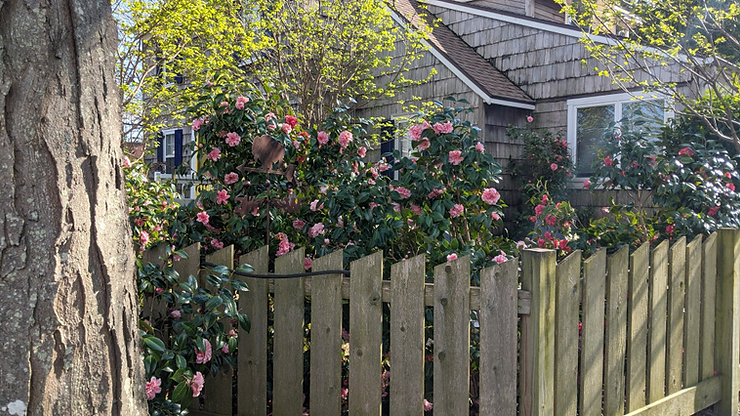
Soil:
A Camellia prefers moist, organically rich, well-drained soil. Ideally, the soil should be slightly acidic with a pH between 5.5 and 6.5.
If you do not have this type of soil in your yard, you can amend the soil with rich organic soil. Or, you can add a berm to your yard filled with rich soil and plant the Camellia there, along with other companion plants.
What is a BERM:
A berm is a rounded mound of soil added to the ground to create height and interest in a yard. Be careful not to place the berm where it could potentially cause puddling of water in rainstorms.
Plant Your Camellia
Now that you have chosen the correct spot to grow your healthy and beautiful Camellia, it’s time to plant it.
!. The best time to plant a Camellia in the north is in the spring when it is in bloom. This will allow enough time for the roots to become established before winter sets in. Otherwise, fall planting is acceptable in more temperate locations.
2. Dig a hole twice the size of the root ball’s diameter to allow for the roots to spread out, and the same depth as the plant. Amend the soil that was dug from the hole as needed to create rich, well-drained soil.
3. Gently remove the ball from the plastic pot.
4. If the roots are wrapped around the ball, take a pocket knife and make 2 to 3 slits down the side of the ball from top to bottom, 1/2 inch deep to loosen the roots.
5. Set the Camellia in the hole by holding the root ball, not the stem, and be sure the top of the ball is about one inch above ground level. You do not want to submerge it below the surface.
6. Backfill the hole using the amended soil. Press the soil down gently to fill any air pockets.
7. Generously water the plant at its base and add more soil as needed to keep it slightly above the ground. Do not trample down the soil.
8. Cover the area with 1 to 2 inches of mulch but leave a 1 to 2 inch area around the stem free of mulch. This will prevent diseases and insects from damaging the stem.
Care for a Camellia
Camellia plants are easy to care for once they are established.
Watering:
Once you have planted your Camellia be sure it gets continuous, deep waterings for the first couple of years, especially during the growing season and in the fall when it is producing buds. Camellias do not do well in drought conditions even after they have been established, so be sure to water them properly to maintain a consistently moist soil.
Fertilizer:
Camellias do not need a lot of fertilizer. After it has finished blossoming, broadcast a balanced fertilizer for acid loving plants around the drip line of the plant.
Pruning:
Pruning is rarely needed. However, if you must, prune the shrub after it has finished blooming before next year’s buds begin to form. Most varieties will respond well to pruning, however C. reticulata will not.
Fungal Diseases and Viruses:
Root rot fungus can be a problem in warmer climates where the soil does not drain well. It can be alleviated with a copper-based fungicide. Unfortunately, it will take years before your plant comes back to its original beauty.
Camellia petal blight (rust spots on the blossoms) damages and kills the flowers. Remove any flowers with spots, including ones that have fallen from the bush. Remove any mulch under the Camellia and replace it with fresh mulch. Dispose of the mulch in the trash, not a compost pile.
Protection:
Even if you have planted a hardier variety, in the northern regions where temperatures reach close to 0 degrees F and there is a lot of snow cover, they need to be protected from the elements. Use burlap to protect your bush.
Loosely wrap your Camellia with burlap and attach it firmly to the ground to prevent it from blowing open. Be sure to cover the plant on top for protection. Remove the snow from the top of the bush after a snowfall to prevent breakage of stems.
Propagating Camellias
You can easily propagate a Camellia by using the long stems of an existing plant.
In the summer, bend a long stem down toward the ground and with a sharp knife cut an angled nick into the stem. Angle the nicked stem down and place it into the ground, covering it with soil. Place a large rock or a stiff wire over the stem to keep it in the soil.
After a year’s growth, the nick will have produced enough of a root system to be cut away from the original plant and dug up to be grown at a different location.
Companion Plantings
If you decide to build a berm or place Camellias in your yard, they will look lovely when paired with other shade loving shrubs and perennials.
Some companion plants include azaleas, rhododendrons, ferns, and hostas. For other shade loving plants, click Beautiful Shade Garden Ideas.
Varieties of Camellias
As I said before there are over 3000 varieties of Camellias. Here are just a few.
Camellia sasanqua: “Sparkling Burgandy”
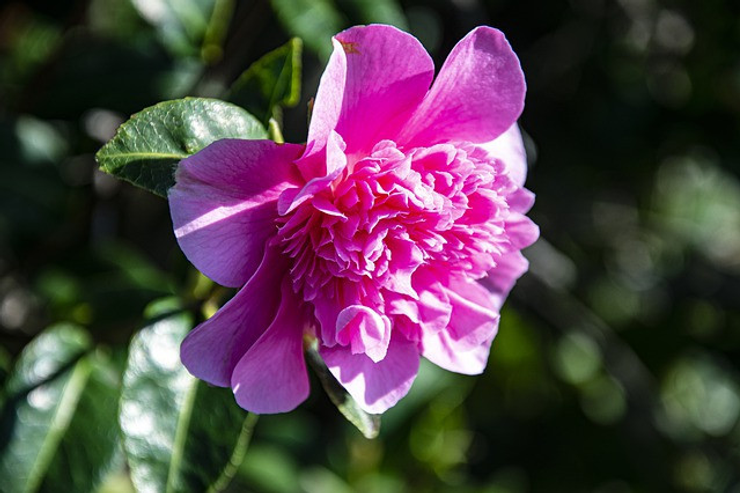
C. sasanqua: “Yuletide”
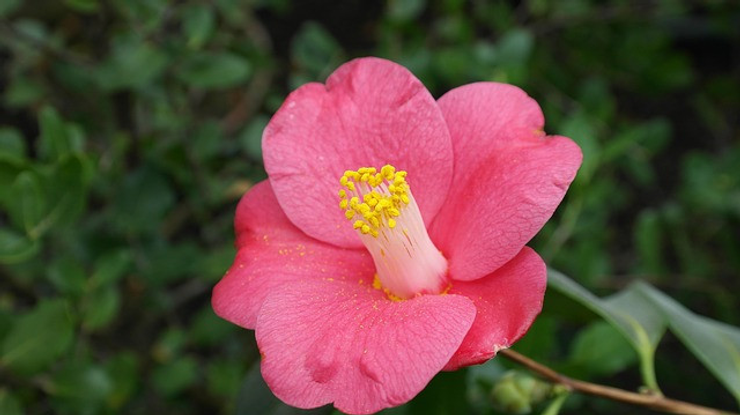
Camellia japonica: “Jerry Hill”
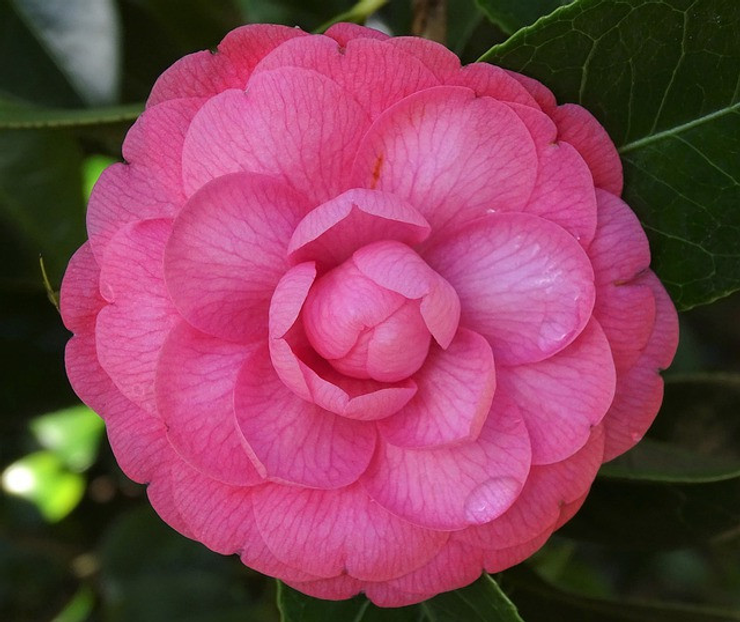
C. japonica: “White Debutante”
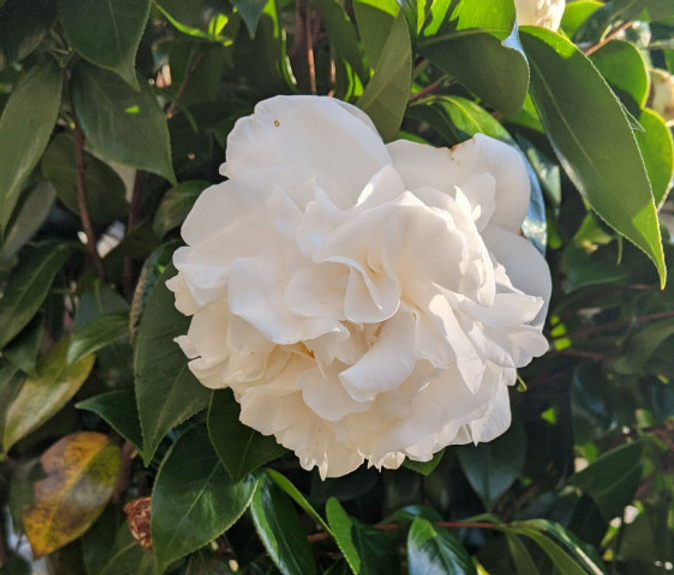
What is a Camellia?
I hope after reading this article you are as in love with Camellias as I am. They are beautiful, delicate blossoms that are widely used in winter and spring bridal bouquets. How appropriate since Camellias symbolize love, adoration, and longing!
If you select the appropriate location and provide the proper type of soil and amount of water, I can almost guarantee you’ll enjoy many years of beautiful blooms on your Camellia.
Happy Gardening,
Nina

